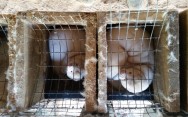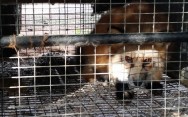Why Aren’t Birds Like Flaco the Owl Safe in Cities?
The death of New York’s beloved owl Flaco was a tragic event that drew attention to the way in which a city-dwelling bird’s life can be tragically cut short. The cause of death? It seems that Flaco died after a collision with a building. Flaco’s death was also attributed to 4 kinds of rat poison that were found in his system. Additionally, he was also found to have a severe case of “pigeon herpesvirus” from eating feral pigeons. Toxicology also showed a breakdown of the pesticide DDT, but the levels of the pesticide were not significant enough to cause his death. The rodenticide and virus were both capable of causing severe illness, according to Dr. Paul Calle, chief veterinarian for the Wildlife Conservation society, though it’s unclear which one was responsible for the bird’s death. Flaco’s ultimate cause of death, a collision with a building, would likely have been caused by the bird flying disoriented while he was suffering from illness and poisoning.
Bird collisions are an incredibly common cause of death for birds. They are the second most common cause of death after domestic cats. Collisions with building glass kill between 90,000 and 230,000 migrating birds in New York City each year, according to Audubon NYC’s research. In addition, birds that dwell in big cities have much more contend with, as they have to deal with toxic pesticides commonly used by private homeowners in big cities like New York City. Wild Bird Fund director Rita McMahon said that rodenticide is to blame for 84% of the deaths of birds that they encounter, and that the poisons can stay in a bird’s system for up to 100 days.
Flaco was a Eurasian eagle-owl that escaped the Central Park Zoo after someone cut his cage’s stainless steel mesh. The Zoo attempted to recapture Flaco, but he began to improve his hunting skills and gain independence, so the Zoo were not able to entice him back with food.
Sightings of Flaco began to be common. New Yorkers celebrated the bird’s presence and his successful bid to live in the wild. The Central Park Zoo cautioned that Flaco might be endangered by eating a poisoned rodent or might prey on sensitive species. Flaco seemed to be doing well, but then in February 2024, a fallen owl was reported to the Wild Bird Fund, and the owl was confirmed to be Flaco. New Yorkers mourned his death and created a memorial to Flaco at the base of his favorite tree in Central Park.
Flaco’s death was a tragedy, but his life was an inspiration. Though he was safe at the Zoo, he followed his natural instinct for freedom and lived a life of independence before he died. His death has focused attention on the issue of bird safety in cities, and what humans can do to make cities safer for birds. New York Senators have renewed a push to pass the Dark Skies Act and renamed the Bird Friendly Buildings Act the FLACO Act. These pieces of legislation will require state owned buildings to make bird friendly provisions in their architecture and to reduce lighting at night, which has been shown to disorient night migrating birds that may fly into cities and die by collision. Birds face a host of threats in cities, including bird collisions, habitat loss, and poisoning by pesticide or rodenticide.
Flaco the owl was an animal who stood out and reminded city dwellers that animal lives have meaning. With the publicity around his death, now is a good time to push local legislators to take steps to introduce legislation to make cities more bird friendly. You can also reach out to your local bird conservation societies to see how you can join the effort to protect birds in cities.








Social Media